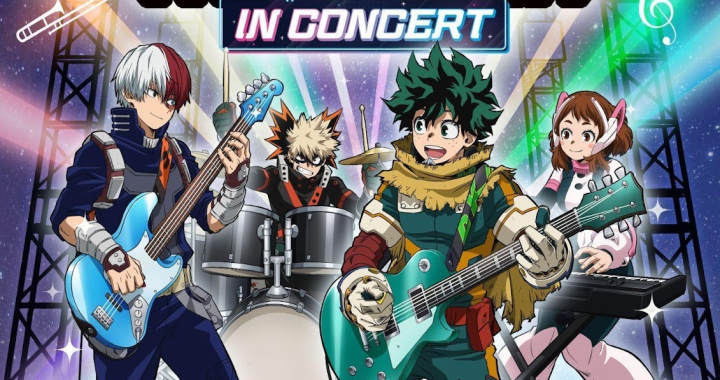
Can Creator Owned Comics Save The Comics Industry?
Posted with permission by Dave Elliott
The Comics Industry is going through something of a secret crisis right now. A crisis that could have been avoided, but one where there is still a way out. The two biggest problems are a stagnation of business ideas and lack of sales.
LET“S LOOK AT THE ORIGINS OF THESE PROBLEMS
For years many have bemoaned the fact that comics have lost their easy accessibility. For decades comics were available on street corners and drug stores (pharmacies or chemists to those of you outside the United States). In the early 1960s single issues of comics regularly sold in the hundreds of thousands. Even before the Adam West-starring TV show, Batman was selling over a half of a million copies every month, Superman even more, although neither sold as many as Disney“s Uncle Scrooge, which sometimes sold over a million copies. Walking through a major city like New York you would have found comics for sale on almost every street corner. Back then prices for comics were lower, even allowing for inflation, than they are today. They were available in more locations and there were fewer titles to collect.
Today Marvel and DC Comics are each publishing more titles each month than were available from all publishers combined in the 1960s. Over the last few years DC“s core line averaged fifty-two titles every month, not including specials, collections, and their Vertigo line. Each of these comics ranged from $2.99-$3.99, with specials and trades ranging from $5 to over $100.
In 1965 the average comic was 10¢. Today the average comic is around $3.99 to $4.99. Allowing for inflation, the price today should really be around 71¢ for a normal 32 page comic, although paper quality has improved, sales per title have dropped way down, rates have increased and companies have added royalties and reprint fees as added incentives for creators, all factors affecting each company“s bottom line.
In the 1960s Batman“s sales doubled to nearly a million copies a month due to the effect of the popular TV show.
In 2012, when The Avengers movie was released, the comic was selling 67,000. Admittedly they were also the co-stars of Avengers Vs X-Men the same month that sold 178,000, but even combined The Avengers aren“t selling today what they were in the mid 1960s when Marvel was still the underdog to DC Comics.
The Avengers sales declines can be traced to the 1980s when, in a move to create market share, Marvel started spinning off many new titles from the more popular books. More Avengers titles, more Spider-Man titles, and a ton of X-Men spin-offs. DC followed suit with Superman, Batman,Justice League, and the Legion of Superheroes. This led to an overall decline in quality and not surprisingly, sales.
Stories were no longer one or two issues long, but told over years, weaving through other titles and mini-series. Often the stories were completed by different writers who had no idea where the original storyline was heading, wrapping it in a way that was beneficial to the stories they wanted to tell. I only need to say Clone Saga and many of you will know what I am talking about.
As the two biggest companies came under control of some of the characters“ biggest fans, the desire to create new characters disappeared.
In the Disney Marvel movies we have yet to see a major character created outside the 1960s. In the Fox Marvel movies we have seen Wolverine, created in 1974, and Deadpool, created in 1991, but the X-men themselves were created in the early 60s.
Before I get flamed, yes, I admit comics in the last 20-30 years have been tremendously creative. You could even argue we are in an age of unparalleled creativity. The only problem is that all the creators and their core buyers have learnt to only tell stories the way Marvel and DC have been telling stories the last 40 years. This makes the individual comics harder to access. Stories are being told in chunks across several issues that work best when read as a collection. I“ve been guilty of doing this myself, but it is difficult to fight the system as a single self-published creator.
When you have a popular character that kids like to buy, but then a separate series comes out under a “Mature”“ banner they“re not allowed to buy, they feel excluded and betrayed. Worse still, the run of a character“s books gets broken.
Many comic buyers were and are collectors. They want complete runs, just like the collectors of trading cards, if you can“t get the whole set, you lose interest.
The 1960s through the 1980s was a period in which most fans could buy the entire line of a company“s output.
As a kid I had enough pocket money to buy all the Marvel, DC Comics, most Charlton Comics, many British comics of the time, as well as Heavy Metal magazine. That was with my pocket money, which wasn“t a lot.
Today with a full-time job I only buy a few comics. Marvel and DC are inaccessible to me as they“re all interconnected and I just don“t have the time to wade through that many comics just to have a vague idea of what is going on. Too many comics broke the collecting habit for 100s of thousands of readers. Millions, if you include the casual reader who could pick up an issue of Batman or Superman at the newsstand or barber.
Marvel and DC Comics desire to have the world read their titles also contributed to the collapse of foreign markets around the world.
In Europe, where companies had always just cherry-picked the best of the material were pressured to take many more titles or lose the better selling ones they had. When this effort didn“t work as well as they“d hoped, Marvel and DC sold titles to other publishers in a countries where they already had deals. Two or more publishers would now be selling their titles. Small, newer companies would take several titles as a way of getting their own fledgling books onto the shelves, not realizing they were cannibalizing the limited shelf space and making it harder for their own material to be established. Marvel and DC sold the rights for their titles, including film costs, for only $25-$27 per page. You can see why many companies would publish that material thinking it could finance their own operations.
INSTEAD, IT RUINED THEIR MARKETS TO A POINT THEY HAVE NEVER RECOVERED FROM
In America, the industry felt that they just needed the right delivery system to bring the market back to the numbers they sold in the 1940s and 50s. The real problem lay in the expansive, impenetrable storylines that turned off the casual and mainstream reader.
When was the last time Time, People, Premiere, La Monde, Pravda, serialized content? If you“re in a hair salon you pick up a magazine to read and its all there. You don“t go searching for the previous or making note to buy the next issue. Comics broke that for readers. It“s going back to that old way, but in other markets where graphic novels are selling, such as the school libraries.
NOW LET“S ADDRESS THE LACK OF NEW CHARACTERS
Many creators have some fantastic creations but they“re not going to be treated the same way as Jack Kirby, Steve Ditko, Wally Wood, Joe Simon, etc. were. They demand a stake in their creations and currently Marvel and DC are offering only crumbs. If that were to change, it could reinvigorate the industry again, but if only there was a model to show them”¦
In Japan, the publishers have a very different relationship to the creators they work with. When a Manga pitch is accepted by a publisher from a creator a partnership is formed. Both parties share equally in anything the property generates. The creator often gets to have a direct hand in movies, anime and video games. Their contributions are embraced rather than shut out of the exploitation of their stories in other media.
The most important thing of all is that when a creator says he or she has reached the end of the story, and that“s the last word on those characters and that property, the story must definitively stop there. The publisher shouldn“t have the right to tell more stories without the creator“s permission. Creator goes on to other properties or other media, leaving behind a healthy, ever-changing market.
Could and would Marvel and DC ever take this course? It would be a win-win for everyone and we“d stop getting the same old characters revamped ad infinitum.
By Dave Elliott
Original piece can be found here
LET US KNOW YOUR THOUGHTS
- If you had to choose, would you stay with the current crop of Marvel and DC superhero characters or would you be willing to have them take more risks and to do lots of new characters and ideas?
- With all the superhero movies from Marvel and DC do you really think we need so many comics of the characters to still be published?
- Do you support independent creators and their characters and if so, which ones are your favorites?










